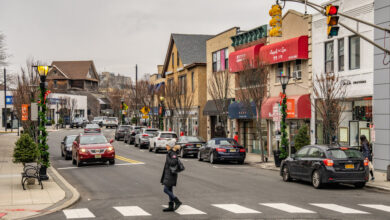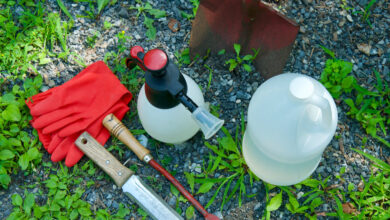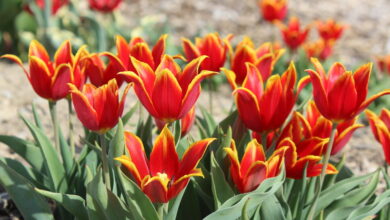Why Gardeners Should Stop Using Peat, and What to Use Instead

[ad_1]
Environmental leaders and other high-profile voices like Monty Don, the British horticulturist, author and broadcaster, have been sounding the cry: Gardeners should stop using peat, because the consequences of its continued harvest on diverse peatland habitats, and the native plants and animals that inhabit them, are too high.
But most such edicts don’t include precise directions on what to use instead — at least, suggestions that reliably translate to success, particularly for seed starters.
If I gardened in the United Kingdom, where government timetables for banning peat in horticultural products have accelerated product research and development, the answer would be easier to come by.
Instead, I feel a bit like I did the first time I tried adapting a favorite dessert recipe to be gluten-free, accommodating friends coming for dinner. The new-to-me flours behaved completely differently in texture and rise — and the density and moistness of the finished cake were unrecognizable. No simple one-to-one flour swap would do it.
Fortunately, I had a backup dessert — and time to practice before another visit, with ever-better alternative flours that appeared on my grocery shelf. That’s basically the approach I am taking in learning to go peat-free.
The Goal: Happy Plants and the Right Thing for the Environment
I sought guidance from Brian E. Jackson, an associate professor in the department of horticultural science at North Carolina State University, whose graduate degrees and career have focused on soilless growing media, or substrates. Dr. Jackson, the director of the university’s horticultural substrate laboratory, is one of a handful of scientists at public universities in the United States studying the role of these materials in horticulture and agriculture.
Like many gardeners, I want to contribute to protecting peatland habitats, I told him. Peatlands provide hydrological services, filtering water and acting as giant sponges to prevent flooding.
The loudest argument, though, in the call for “bogs not bags” — as in, don’t harvest it from the bog to bag it for sale — is the critical role of peatlands as vast carbon sinks. Peat extraction releases substantial CO2, a greenhouse gas, contributing to climate change.
Oh, and I want something else, too, I told Dr. Jackson: I want my plants — especially the most vulnerable of all, the vegetables and flower seeds I’ll sow in flats and cell packs — to thrive. I’m seeking the results achieved with particular peat-based products I’ve relied upon, among many choices marketed since peat was introduced to horticulture in the 1960s, becoming what he calls “the Rolls-Royce of soilless growing media.”
Dr. Jackson confirmed what I suspected: Finding a recipe that works for me — whether premixed or home-blended using multiple ingredients — will require experimentation, just as that cake did.
Yes, he understood the longing I felt scrolling online through the full complement of bagged media for every purpose, all bearing the prestigious Royal Horticultural Society imprint. But those products, created by Melcourt Industries Limited, are marketed only to U.K. consumers, not exported.
In the United States, we aren’t there yet with seedling or other specialty mixes, Dr. Jackson acknowledged. “The first discussions of going peat-free in the U.K. are now 20 years old, so they have had a long time to ponder,” he said.
But the voluntary targets set there in 2011 to end the sale of peat in their home-garden products by 2020 have slipped by. Last December, a ban effective in 2024 was announced, with a 2030 timeline on products for commercial growers.
No such mandates are in force here or in Canada, the source of the vast majority of peat for North American horticulture, and it is still expanding production to meet intense market pressure for soilless media. Canada is home to an estimated 27 percent of the world’s peatlands, 0.03 percent of which are currently harvested or have been, according to the Canadian Sphagnum Peat Moss Association. Only 22 percent of U.K. peatlands are in “a near natural or rewetted condition,” according to the Office for National Statistics there.
Peat bans and other environmental efforts are not the only triggers causing what Dr. Jackson calls “a perfect storm” of soilless-media demand, forecast to increase as much as fourfold by 2050. The cannabis boom is another factor, as are industry shifts to growing crops like berries and citrus fruit in soilless growing systems, rather than in the field. And so is the pandemic-fueled gardening boom.
Peat Reduction, Step-by-Step
So which alternatives can American home gardeners realistically start using with confidence?
Dr. Jackson suggested a three-year transition plan, allowing us hands-on time to explore and get the feel for substitute materials. That also allows more time for North American product introductions to trickle down from research-and-development efforts aimed at commercial growers, the biggest consumers.
Achieving substantial reduction in peat use without sacrificing plant quality or health means going step by step, while remembering some key principles. One, a caveat, echoes my baking flop.
“When you’re trialing new soil materials, people come in trying to compare one to another, and treating them the same,” said Dr. Jackson, who predicts peat will remain the predominant component in many soilless media products well into the future domestically. “But one of the educational transitions that has to occur is understanding that new products may not have the same qualities. They likely need to be treated independently, as new materials — not as what you used to have.”
We need to feel for various nuances, including how these new-to-us media hold moisture (or don’t) and whether they provide a firm base (but don’t compact). Individual peat products are not identical, and that’s even more true of less-familiar substitutes.
Another reality: No product is without an environmental footprint — whether from its production, transport to market, or both. Coconut coir, sourced predominately from South Asia, requires large amounts of fresh water to wash and prepare. Perlite, mostly sourced from Greece, and vermiculite, from South Africa, require furnaces to process. Even local, easily renewable materials, like wood fiber and bark, require energy to process.
Most important: Don’t try to get your first feel for new materials by completely changing your germinating mix, Dr. Jackson said. Seeds sown in the confines of cells or flats require a medium of consistently fine-grade particles.
“Seedlings can be very unforgiving about such physical properties,” he said, “and also the chemical properties, like pH and salts.”
Try a phased approach, like using your old standby mix for most sowing, while sampling a new product or two in smaller tests alongside it. Or experiment with stretching your peat-containing brand with another ingredient like coir. Easy does it, because wholesale failure will send you to the garden center for replacement transplants — seedlings grown in peat.
You can be more confident about experimenting with potting mixes for bigger containers, Dr. Jackson said. Look for bark-based mixes, where peat is listed as a secondary ingredient, and try extending those with compost.
One more potential win: Stop backfilling holes for tree and shrub transplants with soil amended with peat moss, as some gardeners may still do. That is no longer the prescription — and not just to limit peat use. Current best practices recommend letting the roots find native soil, not some false environment; if you need extra fill, blend the excavated soil with homemade compost.
Meet Some Leading Ingredients
The current poster child of peat substitutes is coir, a fibrous waste product from coconut processing. Because plantations are in tropical and subtropical areas, often near saltwater, potassium, sodium and other salts have to be washed from the fibers.
Salts are “especially loathsome to tiny seedlings,” Dr. Jackson said, adding the disclaimer that all brands are not equal. “It is a marvelous material if it’s of the right particle size and doesn’t have the salt in it.”
Start reading labels, and consider trying familiar name brands that presumably had the infrastructure and capital to test more thoroughly. For some small side-by-side seed-starting experiments, I’ll stretch my current medium with the Eco-co brand of compressed coir seed-starting bricks from Gardener’s Supply Company, or Burpee’s compressed bricks of coconut coir concentrate seed-starting soil, and maybe do a coir-and-vermiculite cell pack or two.
In containers, besides extending my bark-based potting mix with compost or a coir product labeled for potting, I’m reminded by Monty Don’s blog to compost some fallen leaves into leaf mold. Segregate a pile, mow over to shred it and then let it age. Screen or sieve the crumbly stuff before using.
It is wood products that will fill the biggest part of the peat-alternative puzzle here and globally, Dr. Jackson said. No other raw organic material is as available or in greater supply, often as a byproduct of lumber and other forestry operations.
And not just composted bark, but also new engineered products made from trees’ inner wood. He and other researchers have spent 18 years sourcing, processing, formulating and learning to use noncomposted wood products as soilless-media additives.
As consumers, we’ll need to keep reading labels, scouting for ever-better iterations.
“Changes are happening, and solutions are on the way for those consumers who want them,” Dr. Jackson said. “In the meantime, there are options to be educated, be selective in which products you try, and to implement gradual trials yourself.”
Margaret Roach is the creator of the website and podcast A Way to Garden, and a book of the same name.
For weekly email updates on residential real estate news, sign up here. Follow us on Twitter: @nytrealestate.
[ad_2]
Source link






